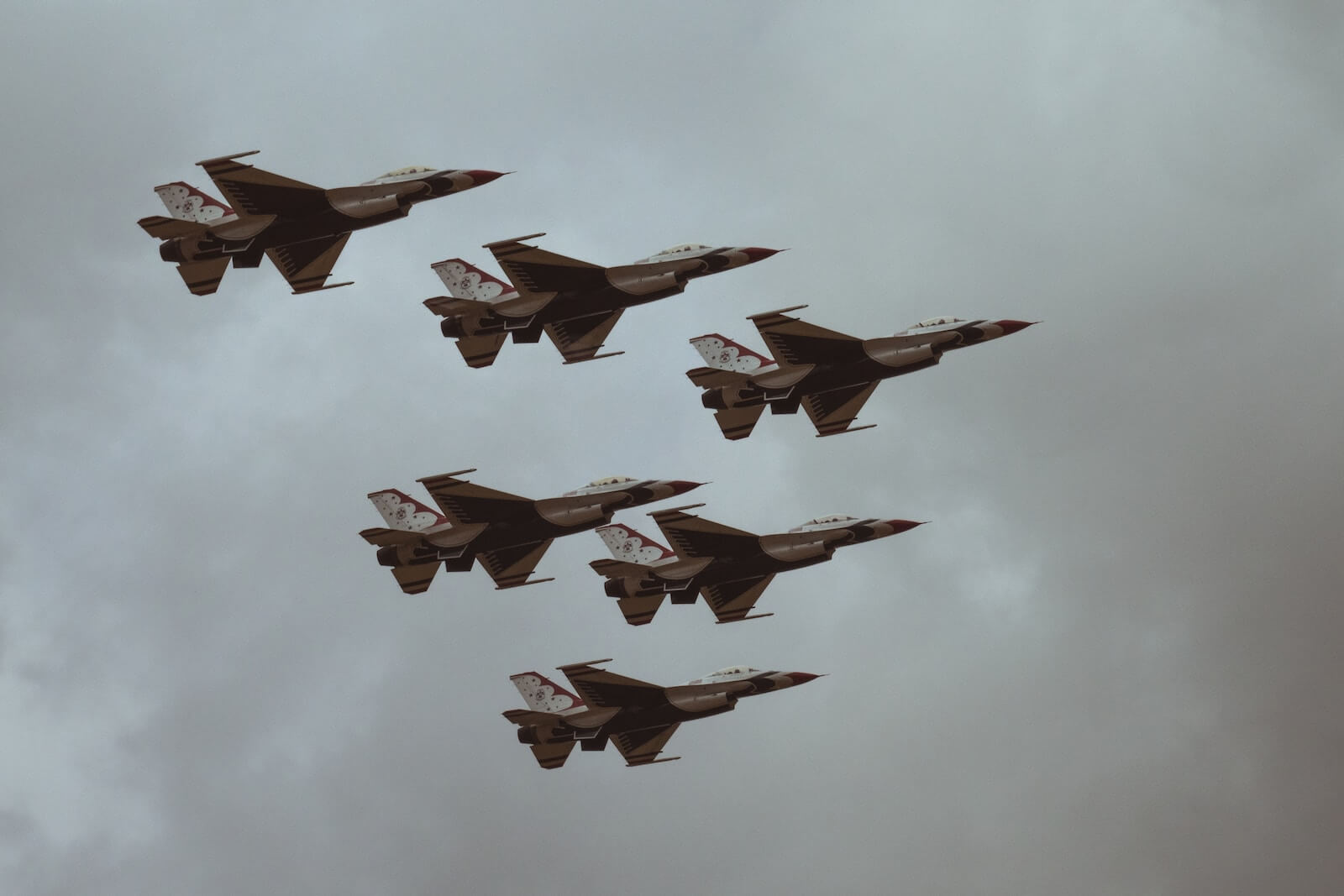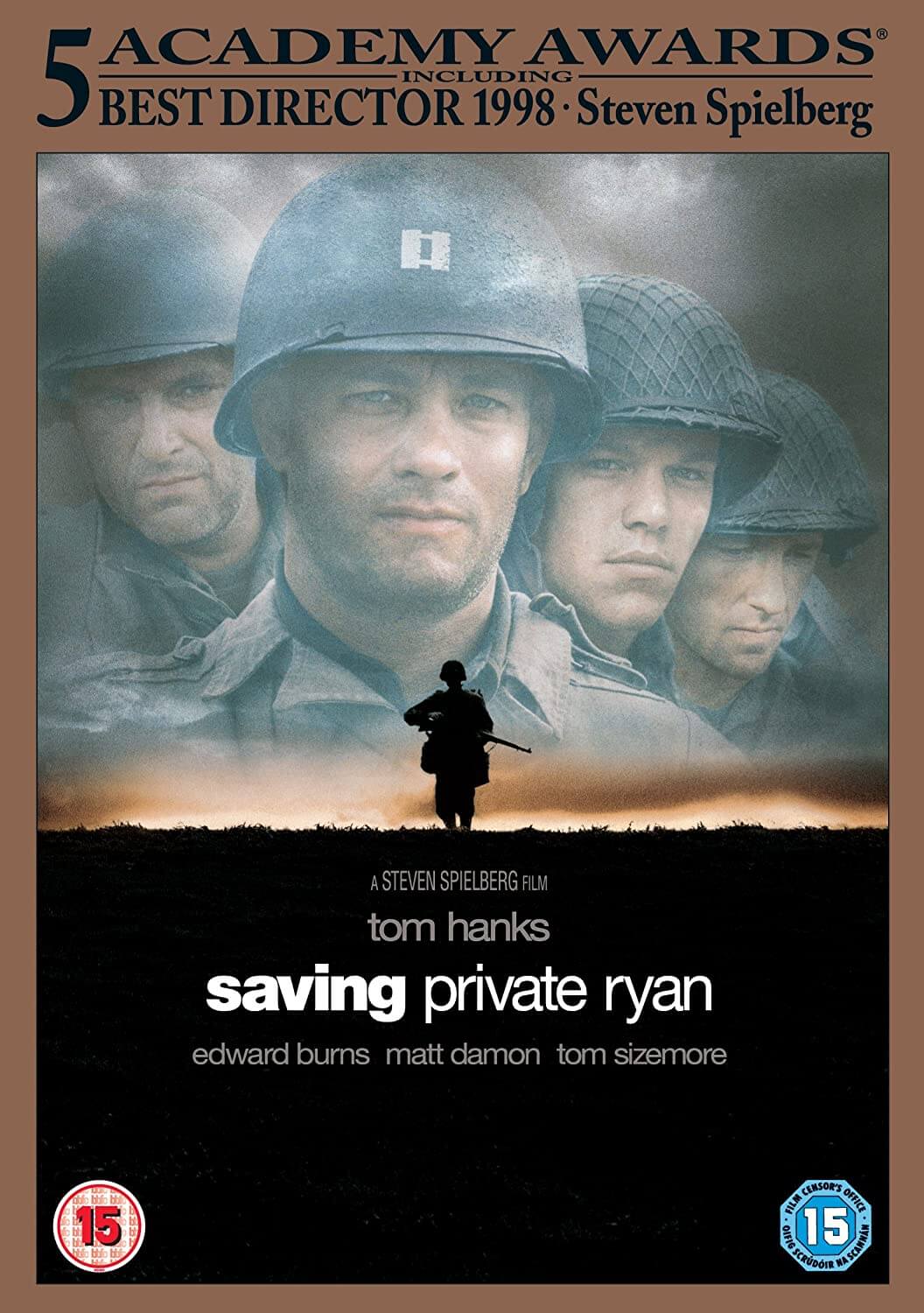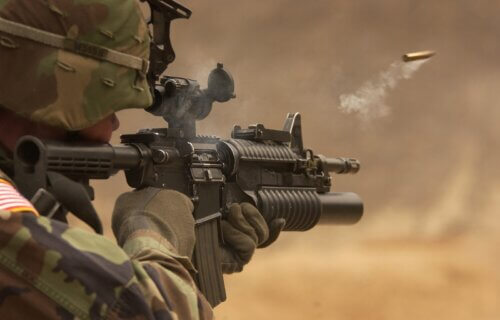When you think of war movies, your brain may scan ones you’ve loved from decades ago until now. Filmmakers have explored the devastating impacts of combat since the earliest days of cinema. Some portray epic heroes and battles, others hallucinated oddness. Either way, there have been many with a variety on our list of best war movies of all time.
In the realm of cinema, war has often served as a gripping backdrop for tales of heroism, sacrifice, and the complex human condition. From the grandiose battlefields of World War II to the gritty trenches of Vietnam, war movies have captivated audiences with their ability to transport us into the heart of conflict. Let us embark on a cinematic journey to unearth the absolute best war movies ever made. Prepare to be immersed in a world where courage clashes with fear, where camaraderie is forged amidst chaos, and where the true cost of war is laid bare on the silver screen.
From timeless classics to modern masterpieces, our exploration encompasses a diverse range of films that have left an indelible mark on the genre. We delve into the works of visionary directors who have skillfully captured the intensity, emotional depth, and moral dilemmas inherent in warfare. Whether it’s the heart-wrenching realism of “Saving Private Ryan,” the poetic beauty of “Apocalypse Now,” or the thought-provoking commentary of “Full Metal Jacket,” each movie on our list has carved its place in the annals of cinematic excellence.
So, grab your popcorn and get ready to embark on an unforgettable cinematic odyssey through the best war movies ever made. StudyFinds visited ten fan websites to find the most legendary titles out there. If there is a movie that you insist should be on the list, please leave it in the comments below!

The List: Best War Movies, According to Film Experts
1. “Apocalypse Now” (1979)
George Lucas was open to direct “Apocalypse Now”, but it was Francis Ford Coppola who finally set out to make what was intended to be the ultimate statement about the madness of war. “It was John Milius who first came up with the idea of transposing Joseph Conrad’s Heart of Darkness to a Vietnam War setting. Milius wrote the first drafts of the screenplay; former war correspondent Michael Herr later added narration. It turned out to be equally about the madness of movie-making. Captain Willard (Martin Sheen) hitches a lift on a Navy patrol boat up the Mekong river to Cambodia on a mission to terminate ‘with extreme prejudice’ a certain Colonel Kurtz (Marlon Brando) who is reported to have gone native in rather a bad way. But it’s a long journey, and before he confronts the renegade colonel, Willard must first face all manner of trippy imagery, including the American Air Cavalry strafing a Vietnamese village to the sound of amplified Wagner, Robert Duvall declaring that he loves ‘the smell of napalm in the morning’, a riot triggered by frigging bunny-girls, a Californian surfer on LSD and Dennis Hopper as a madly babbling photojournalist,” says The Guardian.

Reviews were mixed, possibly due to its hallucinatory madness, but within a year or so it had established itself as a modern classic. “There’s nothing remotely normal about the film’s take on war; this isn’t a typical tale of us versus them. Martin Sheen’s Captain Willard is sent on a kill mission. It’s up to him to take out the seriously unhinged Colonel Kurtz who’s gone off the deep end. Watching Willard himself try and keep it together amidst Wagnerian helicopter attacks, tigers, Playboy bunnies, and Dennis Hopper’s mental photographer is a pure cinematic delight. It begs the question; who’s really losing their mind here? Sheen or the absolutely mad-as-a-hatter Kurtz, played by Marlon Brando? The casualties of war shown here are the minds of men,” shares Games Radar.
Hollywood had largely steered clear of the war in Vietnam while it was being fought. After the war, directors started making movies based on the war while trying to figure out what the war meant to them personally and to the country. “Francis Ford Coppola’s Apocalypse Now is a surprising stand-out. Surprising, because it is a pretty weird and trippy movie. It’s not based on any historical battles. Instead, Coppola took Joseph Conrad’s 1899 novel Heart of Darkness and set it in Vietnam. It is an epic screed against the futility and absurdity of war,” informs Art of Manliness.
2. “Saving Private Ryan” (1998)
Whether it’s an action-packed adventure movie or a gripping historical epic, I think we can agree, few filmmakers create spectacles like Steven Spielberg. “Spielberg had longed to tell the story of the Normandy Invasion as a tribute to his father’s service in World War II, and while he had told World War II stories with ‘1941,’ ‘Empire of the Sun,’ and ‘Schindler’s List,‘ ‘Saving Private Ryan’ is the first of his films that took place in the thick of combat. The opening sequence in which American soldiers storm Omaha Beach is one of the most gripping, violent, and emotional combat sequences ever committed to film,” informs Slash Films.

“Saving Private Ryan” asks complex questions about the value of individual lives in a war that takes thousands. “They were called ‘The Greatest Generation’ for a reason and Steven Spielberg’s seminal war flick shows us what it was in awe-inspiring and occasionally slightly awestruck fashion. Reams have been written about its game-changing opening battle scene on Omaha beach, and it remains terrifying to sit through, but the quieter middle section does the heavy lifting: establishing its weary squad of men as disparate, believable characters and unwilling heroes, there to do a job and go home. It pays off in the climactic defense of Ramelle – the Alamo with Nazis – as the characters come into sharp relief in their individual life-or-death struggles,” says Time Out.
The 27-minute landing sequence that opens “Saving Private Ryan” cost $11 million to shoot, with bullets banging, blood splattering, and explosions so loud they’re disorienting. Parade tells us more, “Tom Hanks leads the cast of director Steven Spielberg’s sprawling, star-packed WWII drama, which stages a smaller story—the search to find and safely evacuate a single solder, Private Ryan (Matt Damon)—atop a much larger one, the epic 1944 assault by Allied troops on France’s Omaha Beach.”
3. “Paths of Glory” (1957)
Paths of Glory is one of the darkest anti-war films ever made, mostly because of its vision. “The place is the western front of the first world war, in a section manned by the French army. An attack is decreed by General Broulard (Adolphe Menjou) and passed on to General Mireau (George Macready) to execute. Everyone knows the attack is doomed because infantry advancing over open ground torn apart by artillery barrages will be cut down by the machine guns in the secure German lines. But when the plan fails, Broulard determines that there must be scapegoats – alleged cowards or malingerers – who betrayed the national purpose. Colonel Dax (Kirk Douglas), who led the attack, is charged with picking three victims who will be subject to court martial and firing squad,” informs The Guardian.
![Paths of Glory (The Criterion Collection) [Blu-ray]](https://m.media-amazon.com/images/I/81uVo95Jn-L._SL1500_.jpg)
Many describe “Paths of Glory” as a patient and solemn look at military structures, hierarchy, and morality in wartime. Movie Web calls the movie, “early remnants of Stanley Kubrick’s formalist, unemotional, and rigid filmmaking genius are on full display in his 1957 classic, Paths of Glory. Setting itself far apart from other American war films.”
4. “Patton” (1970)
Fans say that even if the movie “Patton” had nothing else going for it, the film would likely still succeed thanks to the legendary performance of George C. Scott. “But it’s not all that makes Patton great. Director Franklin J. Schaffner uses Scott’s performance as a linchpin, framing the war narrative through Patton’s bombastic eyes and tireless spirit. The result is a war film unlike any other, one driven by a single unstoppable personality,” says Mental Floss.

George C. Scott’s five-star performance as WWII General George Patton, who commanded the U.S. Army in the Mediterranean won an Oscar for his role. The movie swept six others. “Patton won Best Picture and Best Director (for Franklin J. Schaffner, who had also directed Planet of the Apes, and would go on to The Boys From Brazil and Papillon). But Scott refused his trophy; he informed the Academy ahead of time that if he happened to win, he would turn it down because he believed that no acting performance should be judged against any other. The opening scene—with Patton addressing his troops in front of a massive American flag backdrop that fills the screen—became a pop-cultural icon,” says Parade.
“Patton” should have a spot on this list from its opening sequence alone where the legendary general, gives a no-holds-barred motivational speech to the troops in front of a gigantic American flag. “This biographical film about General George S. Patton is a favorite among war movie buffs… deservedly so. It went on to win seven Academy Awards, including Best Picture and Director,” shares Esquire.
5. “The Thin Red Line” (1998)
The 1962 James Jones novel on which “The Thin Red Line” is based, is a story about the Guadalcanal campaign, fought in the Solomon Islands in 1942. “While The Thin Red Line holds a deserved place in the annals of war movies it is rather more a war dreamed of by Terrence Malick than the one actually fought for in reality. For Jones, the ‘thin red line’ came from Kipling and stood for the infantry, but it was also the line that separated the sane from the mad. The author of From Here to Eternity, Jones had actually served at Guadalcanal, but in the preface to his novel, he admits he had created a place of the imagination. In truth, that is the key to Malick’s film which, filmed in Queensland and the Solomon Islands, is as interested in the flora and fauna of the Pacific as it is in the outcome of the combat. So we see American soldiers trying to take a hill, but we see more of the long grass in the wind than we do of the enemy. Beneath it all – the shooting and the talk – there is a sense of the island having been there long before and long after the battle,” states The Guardian.

The standout performance comes from Nick Nolte who plays a ranting colonel whose authority has been questioned. “After being absent from the filmmaking circuit for 20 years, Terrence Malick returned with The Thin Red Line. A lingering, slow-drawl of a war film that shows how mankind’s desire to fight one another devastates nature. Cut down from a much longer version, the finished movie surprised a lot of the cast – who learned in the theatre that their roles were bigger/smaller than expected. It’s the thin red line of the title, which is, according to Malick, what separates the sane from the mad, that’s best brought to life over and over in the performances of its soldiers. In particular? Nick Nolte’s unhinged Colonel; possibly his best-ever role,” shares Games Radar.
Unlike the movie “From Here to Eternity”, which starred Deborah Kerr and Donna Reed, there are no women as characters in “The Thin Red Line”, not even as dream figures in the minds of the soldiers. Slash Films tells us more, “When ‘The Thin Red Line’ came out, Terrence Malick was known for romantic dramas like ‘Badlands’ and ‘Days of Heaven,’ and hadn’t made a film in 20 years. Any suspicions that the gap was too long or that Malick’s romantic sensibilities wouldn’t fit the massive scale were soon silenced, however. ‘The Thin Red Line’ is an unflinching ensemble epic strengthened by a brilliant cast. While the violence is starkly realistic, Malick incorporates dreamlike sequences that find moments of beauty within the dark setting.”
You might also be interested in the following:
- Best Action Movies Of All-Time
- Best Fantasy Movies Of All-Time
- Best Star Wars Movies
- Best Quentin Tarantino Movies
Sources:
- The Guardian
- Games Radar
- Mental Floss
- Art of Manliness
- Slash Films
- Parade
- Collider
- Movie Web
- Esquire
- Time Out
Note: This article was not paid for nor sponsored. StudyFinds is not connected to nor partnered with any of the brands mentioned and receives no compensation for its recommendations.

Without Das Boot this list is nonsense.
Where are Battle of the bulge and Battam with Robert Taylor ranked?
I believe the movie “The Longest Day” deserves consideration as one of the top “war movies” ever produced
A bridge too far.
I agree
How could you leave “In Harm’s Way and the Longest Day” off the list.
The best war movies…picked by movie experts. How about a best war movie list picked by war experts? I reckon it would be quite different.
Films that immediately come to mind:
Cross of Iron
Black Hawk Down
13 Hours
We Were Soldiers
Das Boot
The Outpost
HM to Band of Brothers, the HBO series
All of the above do an excellent job of portraying the realities of combat that many other war films miss the mark on – including ones on the film experts’ list.
This list is rubbish. I hope the person that picked these movies reads the comments. All of those movies, except SPR, were the ones that so called movie critics would pick if they want to sound smart.
How can you leave out Fury and also Behind enemy lines
I believe the thin red line is the best war movie of all time, there are numerous reasons why, and this from my perspective as a war veteran
USMC 1979 – 1994 (Lebanon & Somalia).
How does this not include Tora Tora Tora, nor the Battle of the Bulge? Who voted for this list?
My favorite war movies that no one seems to have mentioned or watched are:
1. Kelly’s Heroes
2. Hunt for Red October
Full Metal Jacket
Glory
The Thin Red Line?
Seriously?
The Longest Day!!!
Star studded epic!!!
This list is a joke. Where is Blackhawk Down? This brilliantly captures a true story as well.
Downfall
The original The Thin Red Line came out in 1962 with the actor Keir Duiela in the title role.
You and your list are a joke, stop the clickbait.
My two cents: 1st: “… gritty trenches of Vietnam…” Maybe cause I’m old now, but I don’t recall “trenches” in Vietnam. I’m equating this statement with the trenches of WWI. If the author is referring to trenches dug around base camps for defense, well, I guess ok. Personally, I think “bunkers” would be a better description.
2nd, my additions to some of the other commenters’ great lists: The Boys in Company C (Vietnam), Casualties of War (Vietnam), All Quiet On The Western Front (WWI), The Blue Max (WWI), Das Boot (WWII), Flags of Our Fathers (WWII), Letters From Iwo Jima (WWII).